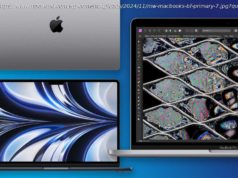News, Reviews & Betas which includes large community peer support The Microsoft Store in Windows 11 has gone through a major revamp. If the OS had shipped with Android apps support via the storefront on launch, we think Microsoft would’ve had a winner on its hands.
The starting date for Windows 11’s staggered rollout is only a couple of days away, and hopefully, you’ve been following along to our in-depth coverage of the OS to find out what’s new. We have also been discussing specific Windows 11 features in dedicated articles via our ongoing Closer Look series. So far, we have taken a look at Search, Widgets, the Start menu, Snap Layouts and Snap Groups, the Taskbar, quick settings and notifications, Virtual Desktops, power and battery settings, default apps configurations, File Explorer, context menus, Teams integration, and the updated Clock app in Windows 11. Today, we’ll be discussing the revamped Microsoft Store in Windows 11, that is actually coming to Windows 10 too. For the purpose of this hands-on, we’ll be taking a look at Windows 11 build 22000.194 that was released to the Beta Channel a couple of weeks ago versus a publicly available and up-to-date Windows 10 (version 21H1 build 19043.1237). While the OS is still under active development, given that we’re nearing the launch date of Windows 11, it’s a bit unlikely that the feature-set we talk about get massively revamped by the time of its general release. As stated previously, the new Microsoft Store is coming to Windows 10 too, but since that has not happened yet, it makes sense to discuss the storefronts present in the two operating systems separately. Starting off with the launch experience, it’s fairly straightforward. You get a landing page that shows you some highlighted apps in a carousel, but you can also shift between different categories using the pane at the top. You can add a work or school account by clicking on the profile symbol on the top-right and use the three-dots menu next to it to access a variety of configurations such as Downloads and updates, Settings, Library, and Wish list, among other things. Talking about specific options available via the three-dots menu, I must say that I’m not a fan because they waste too much space. A prominent example of this is the Settings menu shown in the screenshot above. You can’t expect me to believe that this is really the most space-efficient way to show this information. In the same vein, “Purchased” launches a webpage to show you all the apps that you have bought. I just don’t understand why this information can’t be presented inside the Microsoft Store app. It makes for a very jarring experience and I don’t really like the fact that I have to sign in from my browser just to see the apps I have spent money on. The same thing happens when you click on “View account” or “Payment options”. I’m not sure if this is due to some security reasons or something else, but overall, it just results in a bad user experience. In terms of the end-user experience, t he search functionality is easy-to-use. You simply type in your search item, after which you’ll (hopefully) be shown relevant results. You can use the filters at the top to further restrict results to different “departments” – which are essentially categories – or the type of device you are using. There is no context menu to install an app directly from the search results, you have to visit its dedicated store listing by clicking on it. Talking about the dedicated store listing, most of the space is taken up just by a huge banner for the app, the app’s description and rating, and a few other options such as Wish list, and Install. I’ve always found this to waste way too much space as you have to scroll down to view the actual reviews, detailed descriptions, screenshots, system requirements and more even though there is tons of wasted space at the top. It’s a very inefficient UI.






